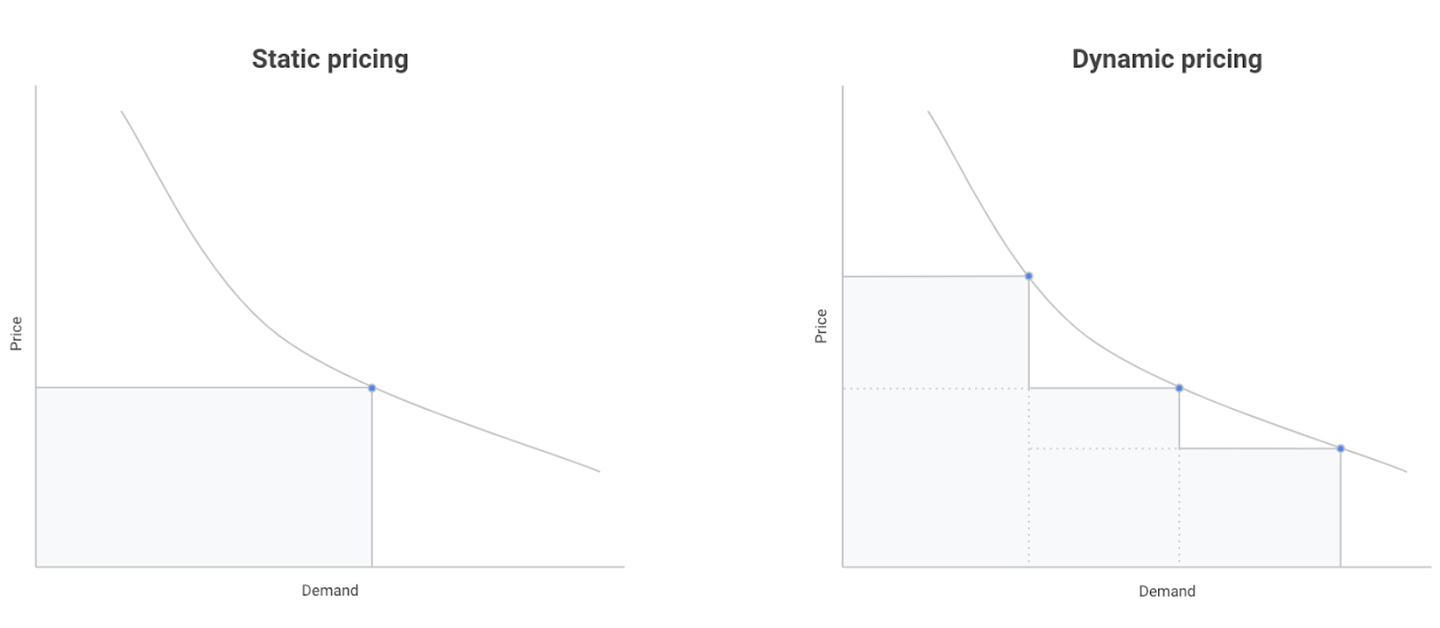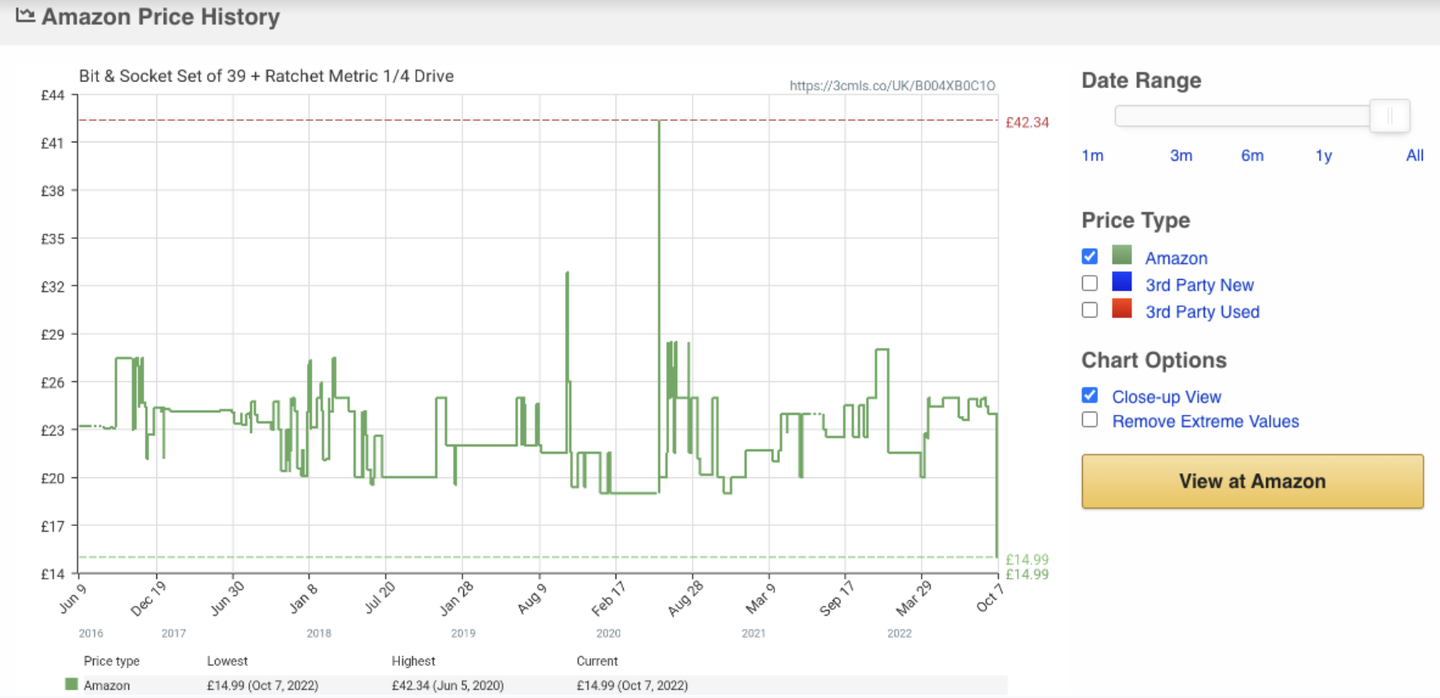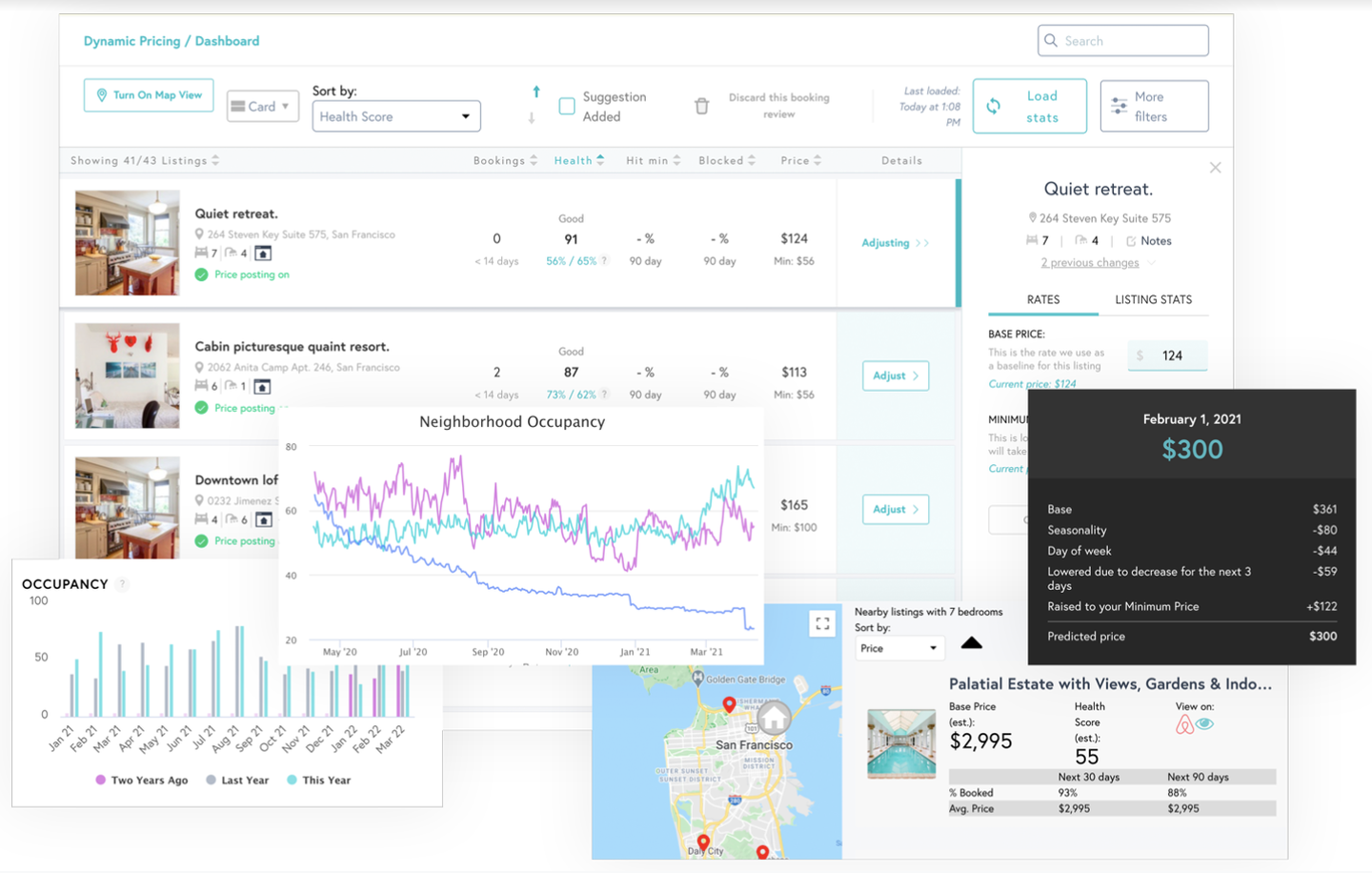Dynamic pricing is on the rise. Earlier this summer, the Investors Chronicle reported that a combination of inflation and technological progress have driven a rise in the usage of the technique. Between 25 and 30 percent of all retailers in the UK and Europe are now using dynamic pricing, with the biggest growth occurring in sectors such as consumer goods, grocers, consumer electronics, sporting goods, DIY and home improvement.
In a context of rising inflation and increasing supply chain volatility, dynamic pricing may become a necessity for many businesses. And thanks to technological progress, it seems likely that a majority of companies will be using software to manage their prices in years to come. In this blog, we take a deep dive into some lessons for anyone considering investing in this strategy.
1. Dynamic pricing offers an opportunity to maximise total revenue by setting multiple price points
While dynamic pricing might feel new or radical in some contexts, it’s worth remembering that this was the default way to set prices for much of human history. Up until relatively recently, every price was a negotiation between the parties. Shopkeepers and merchants would vary their price based on who the customer was (e.g. social status, loyalty), temporal factors (e.g. time of day, season), and other factors influencing supply and demand.
The diagram below shows a simplified example of dynamic pricing. On the left, imagine a single fixed price (e.g. if an airline were to offer a single price for a flight). The right hand side shows how they might offer a premium price when demand for flights is high, or a discount price to stimulate demand at quieter times. As the diagram shows, dynamic pricing allows the airline to achieve greater revenue.





2. Digitisation has led to dynamic pricing becoming smarter and more nuanced
For dynamic pricing to work, businesses need to understand a lot about their customers. How much are people willing to pay for your services? What factors might make them willing to pay more (or less)? How does this demand change over time? It has always been possible to get these sorts of insights using traditional market research. But as companies have become more digitally mature, the power of real-time data has made dynamic pricing faster and more powerful.
For example, a typical high street retailer faces limits on its ability to change in-store prices dynamically. Products or shelves need to be physically re-labelled by staff, making changes impractical over shorter time periods (e.g. hourly or daily). It is also harder to differentiate between two customers entering their store at the same time, and harder still to charge them separate prices for the same product.
Compare that with Amazon, where product prices are reported to change 2.5m times a day. Amazon is reported to drive pricing decisions with a system that takes into account a range of datapoints such as customer activity, competitor pricing, inventory, order history and expected margin. You can see how this strategy plays out for every product with Amazon price tracking tools like camelcamelcamel (see below).





3. As more organisations have shifted to digital-first business models, dynamic pricing is spreading into new sectors
Dynamic pricing has reportedly helped Amazon boost profits by 25%. So it’s not surprising that we’ve seen competitors like Best Buy also adopt the approach. As companies have shifted to digital-first business models, we’ve seen dynamic pricing spread to some surprising places. We’ve seen the approach taken by theme parks, sports clubs and restaurants. Royal Caribbean even uses dynamic pricing to sell pre-cruise drinks packages.
4. SaaS is making dynamic pricing easier to implement
As dynamic pricing grows in popularity, there has been an explosion in SaaS tools that allow any business to get up and running. These tools are often designed with a specific sector in mind. For example, short-term rental managers and owners can use Beyond to manage their revenue. The platform connects with marketplace platforms like Airbnb and Booking.com, and can automate the process of setting prices based on local demand, seasonality and day of the week.





In the retail space, we have found Wasteless’s platform particularly interesting. They are focused on dynamic pricing for groceries, and are framing their offer around reduction of food waste. Globally we waste one third of our food, 85% of which is caused by throwing away fresh food that has reached its expiry date. Grocers have historically tried to mitigate this problem with manual discounting food one day prior to expiry. Wasteless takes a more nuanced data-driven approach. The system looks at a number of data points beyond expiry date (e.g. food category, seasonality, etc), offers discounts at the optimal time (which may be several days before expiry), and adapts over time thanks to use of reinforcement learning.
5. If handled badly, dynamic pricing can lead to trust issues (and attract regulatory scrutiny)
While dynamic pricing offers many temptations to businesses seeking to maximise revenue, we have seen that the technique can be unpopular with customers. Ticketmaster made the news for all the wrong reasons earlier this year, having adopted dynamic pricing for upcoming tours by Coldplay, Harry Styles and Bruce Springsteen. High demand saw concert tickets reportedly reach as high as $5,000. Looking further back, a fully data-driven approach landed Uber in trouble when surge pricing reached eyewatering levels due to increased demand during moments of crisis (e.g. an explosion in New York City).
These examples point to a particular challenge found with fully automated systems: you can’t always predict what proxy variables might be driving prices higher. This suggests a need for monitoring and auditing to ensure that unexpected trends don’t result in unintended negative consequences for your brand.
FT Strategies can help you explore and implement a dynamic pricing strategy
We’ve worked with a wider range of clients to explore which approach can offer most value. If you’re thinking of making changes to your pricing strategy, please also read our blog ‘Five steps to optimising your pricing’. And get in touch if you’d like to continue the conversation.
